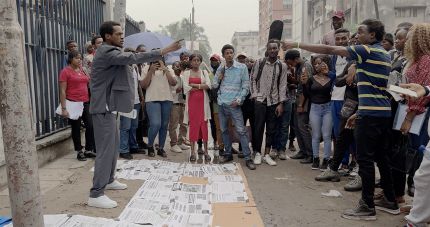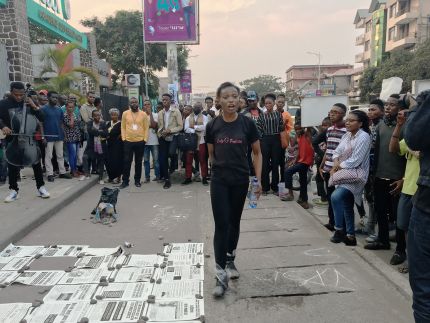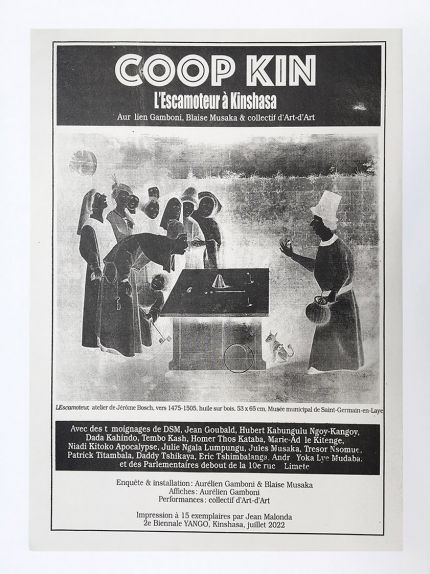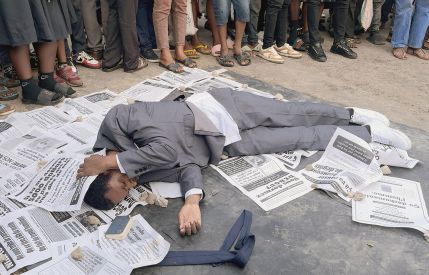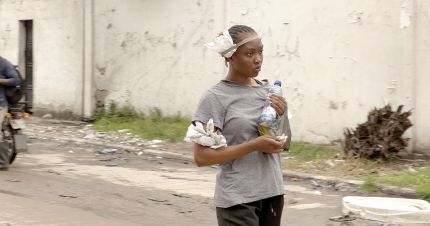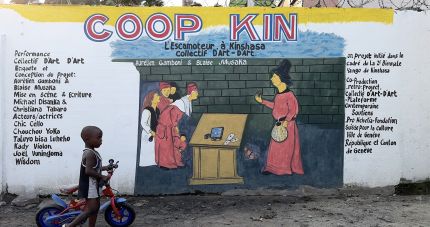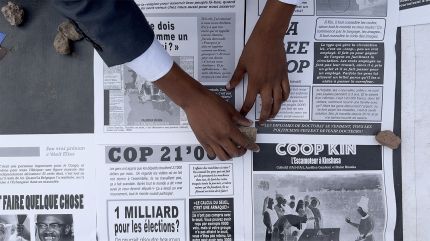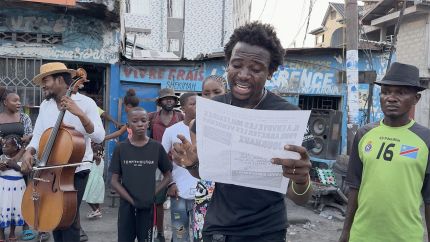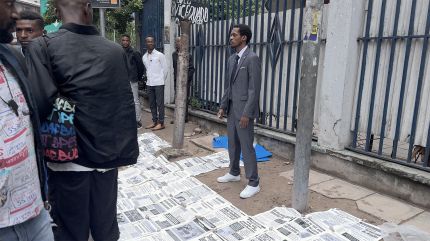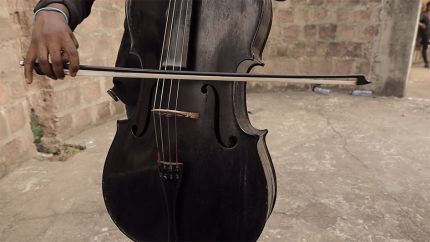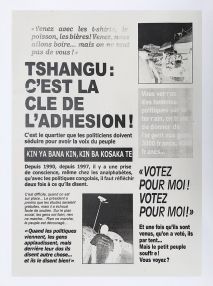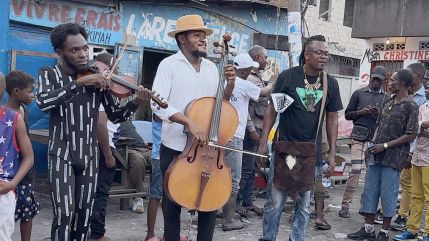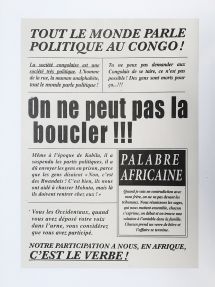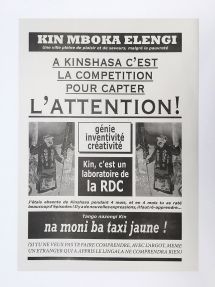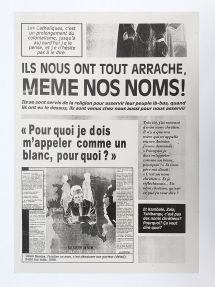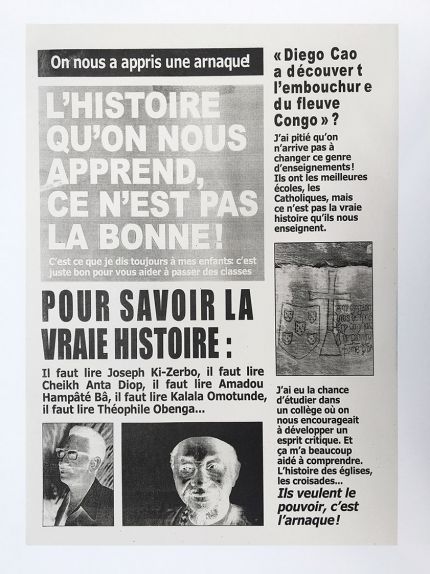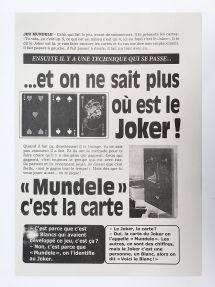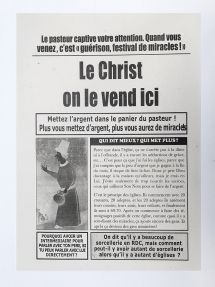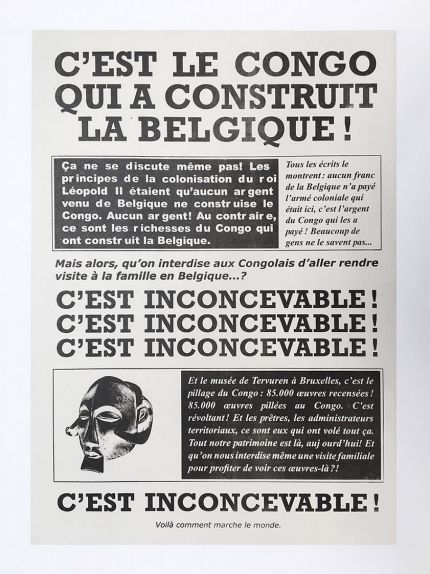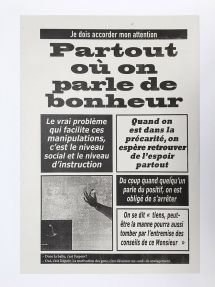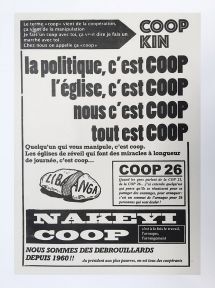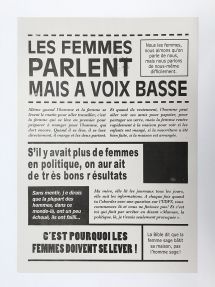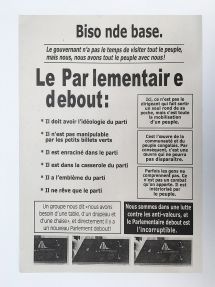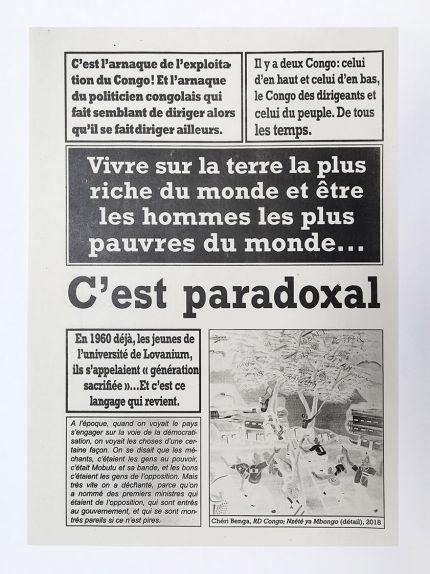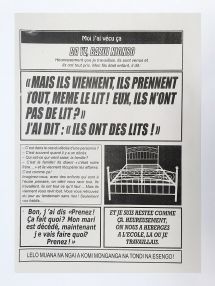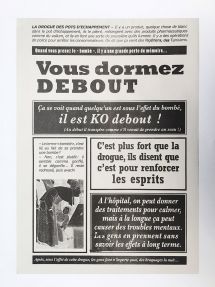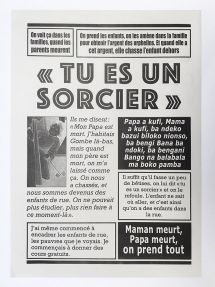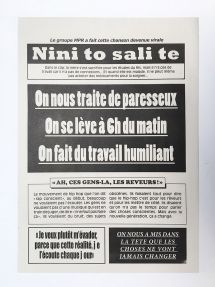>
* The title of the project “COOP KIN” comes from the local expression “coop” (deriving from cooperation) –an ambivalent term that can mean both scamming and manipulation, as well as work or collaboration–, and from the common diminutive of the city: “Kin”.
Investigation and project design: Aurélien Gamboni & Blaise Musaka
Posters: Aurélien Gamboni
Writing and staging of the performance: Michael Disanka & Christiana Tabaro / Collectif D'Art-D'Art
Actors: Chic Cello, Chouchou Yoka, Taluyobisa Luheho, Kady Violon, Joël Vuningoma, Wisdom / Collectif D'Art-D'Art
Documentation: Blaise Musaka (direction and sound), Danny Baron Mukendi Mpoyi and Kam Perrin (camera)
Co-production: retro:project, Collectif D'Art-D'Art, Plateforme contemporaine
Supports: Pro Helvetia, City of Geneva, République et Canton de Genève
COOP KIN (L'Escamoteur à Kinshasa)
A project initiated by Aurélien Gamboni & Blaise Musaka
Performance by Michael Disanka & Christiana Tabaro / collectif D'Art-D'Art
Biennale Yango et Plateforme Contemporaine, Kinshasa
Juin 2022 / janvier - février 2024
As a project of street performance and installation, “COOP KIN (The Conjurer in Kinshasa)” is a unique artistic intervention in the city of Kinshasa, created for the 2022 Yango Biennial and presented in 2024 in various districts of the city. Based on a collection of local testimonies, the performance re-enacts the way newspapers are presented in Kinshasa – laid out on sidewalks with a stone at each corner – which regularly turn into fascinating political arenas. The piece mobilizes six actors hidden among passers-by, facing 48 original newspaper covers conceived from the stories collected during the investigation phase. The actors draw on these fictitious newspapers to weave new relationships between the stories, blurring the boundary between fact and fiction, and gradually drawing the audience into a play in which they are part and parcel.
> Trailer of the performance
In Kinshasa, the sale of newspapers on the sidewalk often gives rise to lively exchanges. News items spark debate among passers-by, controversy mounts, until this mundane scene is transformed into a teeming political arena. Sometimes spontaneous, this situation can also be staged by standing parliamentarians (parlementaires debout), the self-proclaimed “speech fighters” who represented the democratic opposition to Mobutu in the 1990s. Originally embodying an unprecedented model of participatory democracy, standing parliamentarians now operate under the aegis of the parties whose line and program they defend, far from their initial ambition to represent “the voice of the people”.
These everyday scenes inspired Aurélien Gamboni and Blaise Musaka, as part of their research residency for the 2022 Yango Biennial. After collaborating on the Lubumbashi Biennial in 2017, the two artists began a new investigation in the Congolese capital, once again drawing on the figure of The Conjurer to gather local testimonies on the appropriation of common goods and the manipulation of attention. In the course of their encounters, they were able to gather contributions from a wide variety of inhabitants: newspaper vendors, journalists, “standing parliamentarians”, political cartoonists, social workers, musicians, political analysts, medical personnel, religious preachers, women's rights activists, teachers and street hustlers.
Based on this research, they created 48 original newspaper covers, printed locally on a rotary press, and inspired by the remarkable graphic diversity of Congolese newspapers. Entirely made up of the testimonies collected, these new newspaper posters present fragments of stories that depict with a strong critical charge (and not without humor) the realities of the Congolese political and media landscape, the daily life of the working classes and the geo-political inequalities of a country subject to numerous forms of predation.
From these posters, Michael Disanka and Christiana Tabaro took up the challenge of conceiving an original play for the streets of Kinshasa, partly reminding the tradition of Theater of the Oppressed. Reproducing a banal scene of newspaper sales on the sidewalks, the play involves six members of the D'Art-D'Art collective, initially hidden in the crowd, who will react to the newspapers and interact with passers-by, drawing the audience into a finely crafted staging. The roles of the main characters evolve as the scenes unfold - the “madwoman” thwarting censorship, the salesman as an authority figure (also a politician, then a corrupt pastor), the militant / standing parliamentarian, the disruptive cellist as a modern harlequin, accompanied by his cello sidekick, not forgetting the accomplice in the crowd to give the repartee. Initially made up of a few curious passers-by, in the end over a hundred people found themselves integrated into the performance, taking part in the debates and singing along with the actors and actresses to the refrain: "Everything is coop! *
> projects: On balls and brains (installation)
On balls and brains (performance)
> investigation: The Conjurer: towards an "ecology of attention"
> texts: L’escamoteur: économie de l’illusion, écologie de l’attention
L’escamoteur, ou le crime envisagé
